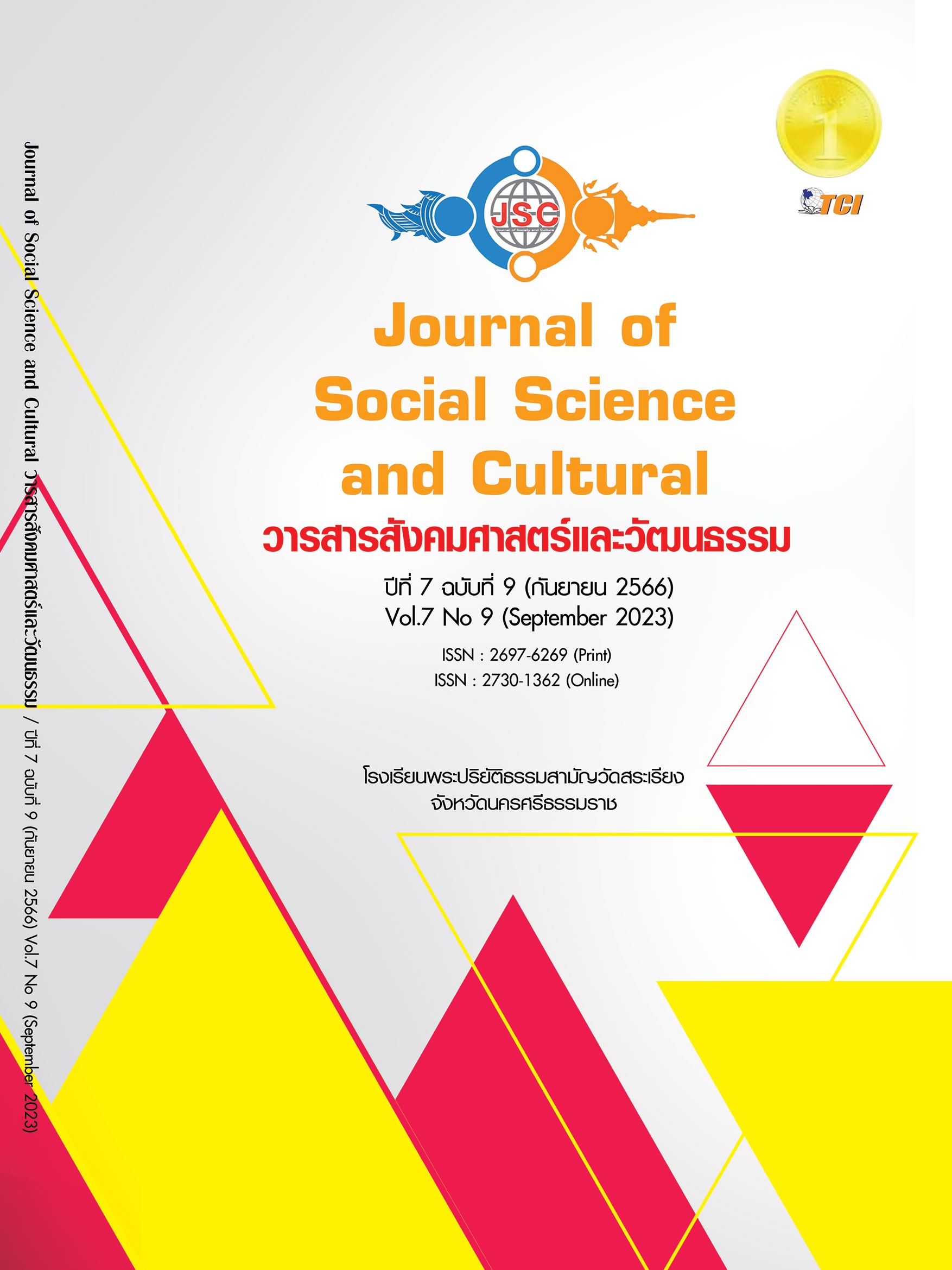NATURAL SOUND INTEGRATED ART ACTIVITIES TO PROMOTE ENVIRONMENTAL APPRECIATION FOR YOUTH
Main Article Content
Abstract
The purposes of the research were to: 1) to study art activities inspired by nature sounds, theories, and concepts of nature sounds that affect human emotions and feelings; 2) to create artistic activities integrating natural sounds to promote appreciation of the environment among young people and 3) To study the effect of using arts activities to integrate nature sounds to promote appreciation for youth. A mixed-methods approach was used, using both qualitative and quantitative techniques. A sample group of informants for activity creation consisted of experts in all three related fields, totaling 11 people, as follows: 1) Three experts on environmental conservation 2) 4 experts on the integration of art activities 3) Four experts on art creation by purposive sampling. The data were collected using an interview form and an activity suitability assessment form and experimental activities with a sample of 15 people. Research results, the researcher synthesized art activities integrating nature sounds to promote the appreciation of the environment for youth, consisting of activities to understand nature sounds through nature sound bingo games and creative works from experimenting with 3 types of nature sounds: rural nature sounds, forest nature sounds, and rural rain nature sounds. In the interviews with the youths who have experimented with the activities, they expressed the following thoughts: Listening to sound deeply allows us to visualize the diversity and differences of sound in each ecosystem, as well as the importance of maintaining nature's integrity through the development of works of art from natural sounds. With such factors, young people see the importance of natural environmental and develop the desire to preserve various natural ecosystems.
Article Details
References
เอกศักดิ์ บุตรลับ. (2537). ครูและการสอน. เพชรบุรี: สถาบันราชภัฏเพชรบุรี.
ประไพ ฉลาดคิด. (2548). หลักการสอน. กรุงเทพมหานคร: เกษมศรี ซี.พี.
สืบ นาคสเถียร และสุรพล ดวงแข. (2534). อนุรักษ์ธรรมชาติและสิ่งแวดล้อมก่อนโลกมัวมน, ตะโกนก้องจากพงไพร. กรุงเทพมหานคร: สารมวลชน.
John Ruskin. (1907). Modern painters. New York: E.P. Dutton.
Ning sced. (2551). ลักษณะของการจัดการเรียนรู้สารสนเทศเพื่อการประกันคุณภาพ. เรียกใช้เมื่อ 26 มกราคม 2565 จาก http://pichaikum.blogspot.com/2008/11/blog-post.html.
Parsons, M.J. (1987). How We Understand Art: A Cognitive Developmental Account of Aesthetic Experience. New York: Cambridge University Press.
Pretorius, M. . (2017). A metaphysical and neuropsychological assessment of musical tonesto affect the brain, relax the mind, and heal the body. Cape Town, 7550, South Africa: African Online Scientific Information Systems (Pty) Ltd t/a AOSIS.
Q. LI, et al . (2009). Effect of Phytoncide from trees on human natural killer cell function. In Department of Hygiene and Public Health, Nippon Medical Schoo. Tokyo, IChiba University, Chiba.
Ulrich, R. S. (1984). View through a window may influence recovery from surgery. Science, 224(4647), 420–421.
Wassily Kandinsky. (1947). On the spiritual in art. New York: Published by the Solomon R. Guggenheim Foundation for the Museum of Non-Objective Painting.


